Hip Hinging…Ever Heard of It???
Hip Hinging…Ever Heard of It???
Hip hinging is a functional movement pattern that you have probably at least heard of. If not, that’s ok! So, why is it SO important?
Well, your hip joint needs to be mobile to be able to perform the important activities of daily living (like bending down and picking objects up) and for strength training (deadlift for example). When the hip doesn’t move the way it is intended to, excessive movement occurs in the areas above and below the hip (aka low back and knee).
The point is, when you don’t hinge well at your hips, it can create injuries over time, including hip, knee, and low back pain. This is why the hip hinge is one of the first things we teach here at Refuge Physiotherapy!
Today, due to the increased occurrence of low back pain in our society and that we see in the clinic, we want to focus on how to hip hinge! We will discuss how to learn the movement pattern then how get stronger!
If you are not performing hip hinge strengthening in your exercise routine, you might just want to begin incorporating them! Let’s be proactive with our health and focus on injury prevention! Whether you have low back pain (or hip or knee pain) or just want to make sure you are hip hinging well and want to get that low back stronger, these will be the BEST exercises for you!
Hip Hinge Movement Pattern (with pole)
The name of the game is 3 points of pressure: Have the pole (or whatever object) on the back of your skull, between your shoulder blades, and on your tailbone all at the same time!
Then, you will maintain that position and bend forward at your hips.
If the pole begins to come off of your tailbone, stop and reset!
That means you are hinging more through your thoracic or lumbar spine instead of your hips!
Your knees should slightly bend through the motion!
This is NOT a squat.
Knock out 2 sets of 8-10 reps of these! If you want to have even more fun, try single leg!
Kettlebell (or dumbbell) Hip Hinge/Deadlift
This is where we begin strengthening through this movement pattern once you have it down!
Start at the top of the motion with your weight.
Keep your lats engaged so your shoulders aren’t pulling forward.
As you bend over and hinge, keep the weight close to your body.
Stop when your head is at the same level as your hips if you feel you can comfortably get there! If not, go with the range of motion that you have!
Remember, you will have to progressively load. Feel good with the weight before you progress. You can start with 3 sets of 5-10 reps.
Barbell Deadlift
This might just be our favorite! Deadlifts are a way to progress your strength better and differently. This is our “go-to” exercise for low back strengthening!
You are starting with the weight on the floor. Engage your lats, tighten that grip, and pull the weight up to a neutral position using your glutes and whole posterior chain!
On the way down, keep that trunk/core engaged and slowly lower the weight, keeping it close to your body.
A great cue is to run the barbell up and down your legs to keep it close it your body!
For strength purposes, you can stick to 3-4 sets of 5-8 reps (or you can always go less or more depending on how your body feels)!
***Reminder: This is not a squat!***
At the end of the day, the two best things to focus on for low back pain are proper hip hinging and strengthening your low back instead of avoiding it. The majority of the time, most providers will only focus on core and glute strength, which isn’t wrong. But, if you want your low back to stop hurting or you are trying to prevent it from hurting, you are going to have to get those muscles stronger just like any other muscle group!
It seems too simple, but it’s very true. Learn how to move properly and get stronger! Getting stronger never hurt anybody! :)
If you feel this was helpful, if you have questions, or if you want to go over it with your physical therapist, schedule an appointment and come in to see us so we can help you get your hinging better and improve that low back strength!







